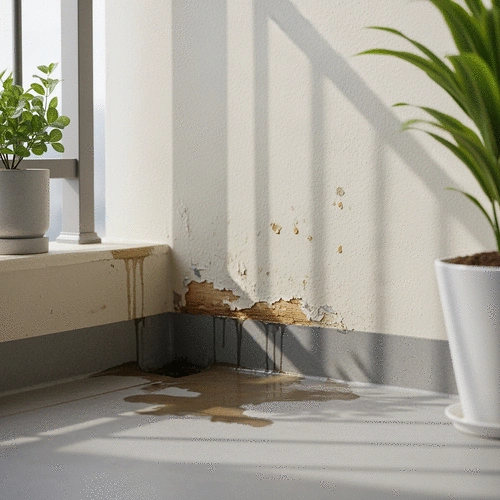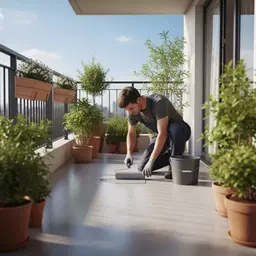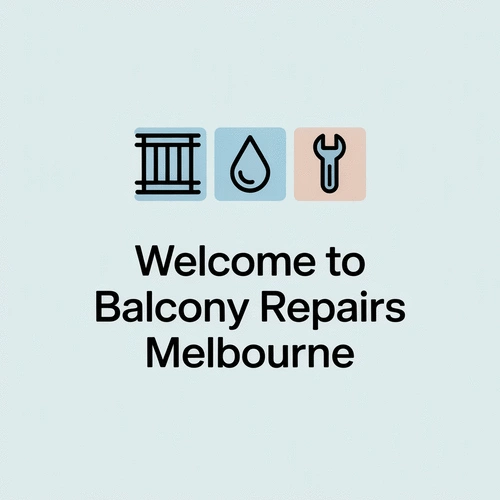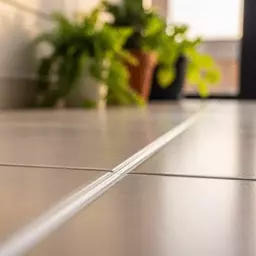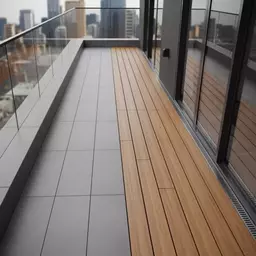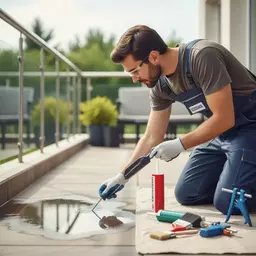Property owners often overlook the signs of water damage until it's too late. By understanding the early indicators and taking proactive steps, you can save your balcony—and your wallet—from devastating repairs. Let's dive into the essential lessons you'll learn about maintaining your balcony's integrity!
What You Will Learn
- Identify common signs of water damage, including water stains, efflorescence, and mold growth.
- Understand the risks of pooling water on your balcony and how it can lead to structural damage and insect infestations.
- Learn practical steps for minor damage repairs, such as sealing cracks and repainting.
- Recognize when to seek professional help for severe damage to ensure safety and compliance with local regulations.
- Discover tools and strategies for long-term monitoring of your balcony's condition to prevent future issues.
Key Balcony Water Damage Indicators and Actions
Understanding the common signs of water damage and the subsequent steps for repair is crucial for property owners. This visual guide outlines key indicators and a recommended action plan. For more detailed information on preventing leaks, explore our guide on how to spot balcony leaks in homes.
Common Indicators of Water Damage
- • Water stains: Discolored patches.
- • Efflorescence: White, chalky residue.
- • Peeling paint: Indicates trapped moisture.
- • Mold growth: Dark spots, health risk.
Early detection prevents escalation.
Physical Changes to Look For
- • Soft/spongy surfaces: Weakened structure.
- • Cracked/loose tiles: Exposes materials to moisture.
- • Musty smells: Sign of hidden water issues.
Investigate unusual textures or odors.
Implications of Pooling Water
- • Structural damage: Weakens materials.
- • Increased mold: Ideal breeding ground.
- • Insect infestations: Attracts pests.
Ensure proper drainage to prevent risks.
Impact of Weather & Humidity
- • High humidity: Contributes to mold.
- • Heavy rainfall: Overwhelms drainage.
- • Temp. changes: Causes cracks in materials.
Proactive measures mitigate environmental damage.
Step-by-Step for Minor Damage Repair
- • Clean & Dry: Affected area.
- • Seal Cracks: With quality caulk.
- • Repaint: Apply protective coating.
- • Check: For underlying issues.
DIY fixes for small issues.
When to Seek Professional Help
- • Structural issues: Sagging, loose railings.
- • Extensive damage: Underlying mold, rot.
- • Safety concerns: Unsure about integrity.
Experts ensure safety and thorough repair.
Emergency Repairs: Severe Damage
- • Isolate Area: Cordon off for safety.
- • Stop Damage: Cover with tarp.
- • Contact Pros: Seek immediate help.
Quick action preserves property value and safety.
Property Owner Responsibilities
- • Compliance: Adhere to local regulations (e.g., California SB 326).
- • Monitoring: Use meters, checklists, apps.
- • Insurance: Understand water damage coverage.
Proactive care ensures safety and longevity.
Recognizing the Early Signs of Balcony Water Damage
As a property owner, it’s vital to stay vigilant about the condition of your balcony. Recognizing the early signs of water damage can save you from costly repairs down the line. A few indicators can help you identify potential issues before they escalate into major problems.
Common Indicators of Water Damage on Balconies
Keep an eye out for these common signs of water damage on your balcony:
- Water stains: These appear as discolored patches on surfaces.
- Efflorescence: A white, chalky residue on walls or tiles caused by mineral deposits.
- Peeling paint: This can indicate trapped moisture underneath the surface.
- Mold growth: Look for dark spots that can compromise air quality and health.
If you notice any of these signs, don’t ignore them! Addressing these issues early can prevent further deterioration and ensure the safety of your space.
Physical Changes to Look For
In addition to visible clues, pay attention to physical changes on your balcony:
- Soft or spongy surfaces: This can indicate water infiltration, weakening the structure.
- Cracked or loose tiles: These may expose underlying materials to moisture.
- Musty smells: A persistent odor is often a tell-tale sign of hidden water issues.
Being proactive about these changes can help maintain the integrity of your balcony. If you feel the surface is not firm or smells off, it's time to investigate further!
Understanding the Implications of Pooling Water
Pooling water on your balcony can lead to significant issues over time. It’s essential to understand the risks associated with standing water:
- Structural damage: Water can slowly erode materials, weakening the structure.
- Increased mold growth: Stagnant water creates a perfect breeding ground for mold and mildew.
- Insect infestations: Standing water attracts pests that can compromise your balcony's safety.
Taking steps to ensure proper drainage will protect your balcony from these risks and help maintain a safe environment for everyone. For comprehensive solutions, consider our waterproofing solutions for Melbourne balconies.
The Impact of Humidity and Weather on Balcony Conditions
Melbourne’s varying weather conditions can play a significant role in balcony maintenance. Changes in humidity and weather can accelerate water damage:
- High humidity: This can lead to condensation, contributing to mold growth.
- Heavy rainfall: Frequent storms can overwhelm drainage systems, leading to pooling.
- Extreme temperature changes: These can cause materials to expand and contract, creating cracks.
Understanding these environmental factors not only helps in early detection but also allows you to take proactive measures to mitigate potential damage.

We Want to Hear From You!
Have you ever experienced water damage on your balcony? What steps did you take to address the issue? Share your experiences with us below:
Taking Action After Identifying Water Damage
Identifying water damage on your balcony is just the first step—taking action is crucial! Once you've recognized the signs, it’s important to address the issues promptly to prevent further deterioration. Here’s a handy guide to help you.
Step-by-Step Guide for Minor Damage Repair
If you've discovered minor issues, such as small water stains or peeling paint, here are the DIY fixes you can try:
- Clean and Dry: Start by cleaning the affected area and ensuring it’s completely dry.
- Seal Cracks: Use a quality caulk to seal any visible cracks around tiles or edges.
- Repaint: After repairs, reapply paint or a protective coating to prevent future damage.
- Check for Additional Problems: Always check for underlying issues to avoid a repeat performance!
However, if the problem seems more serious or if you’re unsure about the extent of the damage, it’s wise to consider more serious interventions.
Knowing When to Seek Professional Help
Some situations call for expert attention. Here are a few indicators that it’s time to reach out for professional repair services:
- If you notice structural issues, like sagging or loose railings.
- When water damage extends beyond surface issues, such as underlying mold or rot.
- If you’re unsure about the safety of your balcony or need thorough inspections.
At Balcony Repairs Melbourne, we are committed to providing comprehensive solutions tailored to your specific needs. Don’t hesitate to contact us for expert guidance!
Emergency Repairs: Addressing Severe Damage Promptly
In cases of severe damage, quick action can save your property from greater harm. Here’s how to manage emergency repairs effectively:
- Isolate the Area: Make the area safe by cordoning it off to prevent accidents.
- Stop Further Damage: If possible, cover the balcony with a tarp to protect it from further weather exposure.
- Contact Professionals: Reach out to us immediately at Balcony Repairs Melbourne—we’re here to help!
Addressing severe damage promptly not only preserves property value but also ensures the safety of you and your loved ones.
Your Responsibilities as a Property Owner
As a property owner, you have certain responsibilities when it comes to maintaining your balcony. Let's explore some essential aspects to keep in mind!
Understanding Compliance with Local Regulations
It’s crucial to be aware of local regulations, like California SB 326, which outlines the responsibilities of property owners regarding balcony maintenance and safety. Compliance not only helps keep everyone safe but also ensures your property remains in good standing. Regular inspections and understanding these laws can protect you from hefty fines and ensure the longevity of your balcony. For more on local standards, read about balcony compliance standards in Melbourne.
Long-term Monitoring and Ongoing Care
Keeping an eye on your balcony's condition is essential. Consider using tools or apps that can help you monitor its health:
- Moisture Meters: Great for detecting hidden water issues early.
- Inspection Checklists: A simple list can help you remember what to look for during your regular checks.
- Reminder Apps: Set reminders for seasonal inspections to maintain vigilance.
Regular monitoring can make a significant difference in preventing extensive repairs down the line!

How Homeowner’s Insurance Can Cover Water Damage Repairs
Understanding your homeowner's insurance policy is vital. Many plans provide coverage related to water damage claims, but the specifics can vary. Here are some points to consider:
- Review your policy to see what types of water damage are covered.
- Understand the claim process—knowing how to document damage can streamline this.
- Consult with your insurance agent for clarity on your coverage.
Being informed can save you a lot of stress and money when dealing with water damage repairs!
Frequently Asked Questions About Balcony Water Damage
Q: What are the early signs of balcony water damage?
A: Early signs include water stains, efflorescence (white chalky residue), peeling paint, and mold growth. You might also notice soft or spongy surfaces, cracked tiles, or a musty smell.
Q: What are the dangers of pooling water on a balcony?
A: Pooling water can lead to structural damage, increased mold growth, and attract insect infestations, all of which compromise the safety and integrity of your balcony.
Q: Can I repair minor balcony water damage myself?
A: Yes, for minor issues like small stains or peeling paint, you can clean and dry the area, seal cracks with caulk, and reapply protective coatings. Always check for underlying problems afterward.
Q: When should I call a professional for balcony repairs?
A: You should seek professional help if you notice structural issues (sagging, loose railings), extensive damage beyond the surface (underlying mold or rot), or if you have safety concerns about your balcony's integrity.
Q: How does weather affect balcony water damage?
A: High humidity can cause condensation and mold, heavy rainfall can overwhelm drainage, and extreme temperature changes can cause materials to expand, contract, and crack, all accelerating water damage.
Q: What are my responsibilities as a property owner regarding balcony maintenance?
A: Property owners are responsible for complying with local regulations (e.g., California SB 326), conducting long-term monitoring with tools like moisture meters and inspection checklists, and understanding their homeowner's insurance coverage for water damage.
Recap of Key Points
Here is a quick recap of the important points discussed in the article:
- Common Indicators of Water Damage: Look for water stains, efflorescence, peeling paint, and mold growth.
- Physical Changes to Monitor: Check for soft or spongy surfaces, cracked tiles, and musty smells.
- Risks of Pooling Water: Be aware of structural damage, increased mold growth, and potential insect infestations.
- Environmental Factors: High humidity, heavy rainfall, and extreme temperature changes can exacerbate water damage.
- Action Steps: For minor damage, clean, seal cracks, repaint, and check for underlying problems; seek professional help for severe issues.
- Owner Responsibilities: Stay compliant with local regulations, conduct regular inspections, and understand your insurance coverage for water damage repairs.

